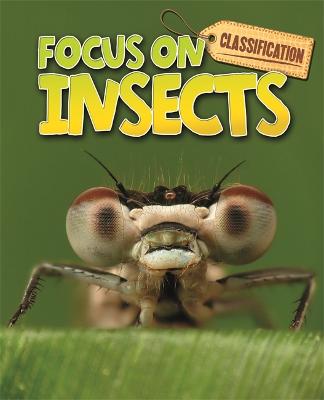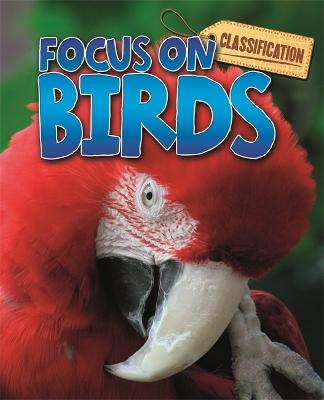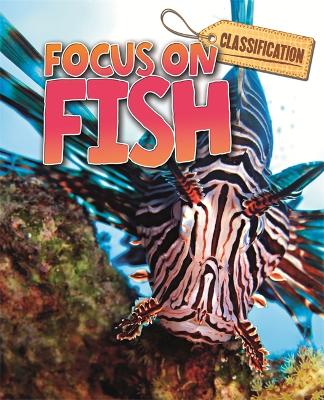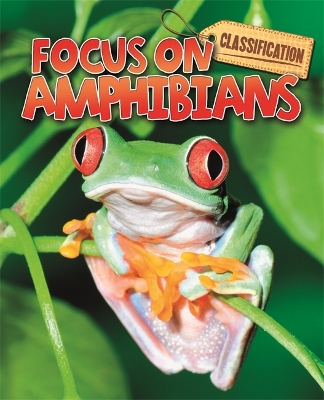Classification: Focus on
6 total works
Classification: Focus on: Reptiles shows children how to identify and group reptiles according to their characteristics. It answers questions such as what is a reptile? Where do reptiles live? What do reptiles eat? And how do reptiles keep cool? Along with many others.
The book looks at reptiles from snakes and lizards to alligators and turtles and their young, as well as some more unusual reptiles such as tuataras and basilisk lizards. It also offers advice on keeping reptiles as pets.
The book also contains a useful scale to demonstrate the size of many reptiles in comparison to a human hand or an adult human, along with a topic web, a glossary and some suggestions for extension activities.
Other titles in the series include Classification: Focus on: Amphibians, Classification: Focus on: Birds, Classification: Focus on: Insects, Classification: Focus on: Mammals and Classification: Focus on: Fish.
Classification: Focus on: Birds shows children how to identify and group birds according to their characteristics. It answers questions such as what is a bird? Where do birds live? What do birds eat? And how do birds get around? Along with many others.
The book looks at birds from owls and penguins to eagles and hawks and their young, as well as some more unusual birds such as pelicans and secretary birds. It also offers advice on keeping birds as pets.
The book also contains a useful scale to demonstrate the size of many amphibians in comparison to an adult man, along with a topic web, a glossary and some suggestions for extension activities.
Other titles in the series include Classification: Focus on: Amphibians, Classification: Focus on: Insects, Classification: Focus on: Reptiles, Classification: Focus on: Mammals and Classification: Focus on: Fish.
Classification: Focus on: Fish shows children how to identify and group fish according to their characteristics. It answers questions such as what is a fish? Where do fish live? What do fish eat? And how do fish move about? Along with many others.
The book looks at fish from sharks and piranhas to pufferfish and catfish and their young, as well as some more unusual amphibians such as lampreys and cleaner wrasses. It also offers advice on keeping fish as pets.
The book also contains a useful scale to demonstrate the size of many fish in comparison to a human hand or an adult man, along with a topic web, a glossary and some suggestions for extension activities.
Other titles in the series include Classification: Focus on: Birds, Classification: Focus on: Insects, Classification: Focus on: Reptiles and Classification: Focus on: Mammals.
Classification: Focus on: Mammals shows children how to identify and group mammals according to their characteristics. It answers questions such as what is a mammal? Where do mammals live? What do mammals eat? And how do mammals keep cool? Along with many others.
The book looks at mammals from monkeys and bears to elephants and meerkats and their young, as well as some more unusual mammals such as mole rats and duck-billed platypuses. It also offers advice on keeping mammals as pets.
The book also contains a useful scale to demonstrate the size of many amphibians in comparison to a human hand or an adult male, along with a topic web, a glossary and some suggestions for extension activities.
Other titles in the series include Classification: Focus on: Amphibians, Classification: Focus on: Birds, Classification: Focus on: Insects, Classification: Focus on: Reptiles and Classification: Focus on: Fish.
Classification: Focus on: Amphibians shows children how to identify and group amphibians according to their characteristics. It answers questions such as what is an amphibian? Where do amphibians live? What do amphibians eat? And how do amphibians keep cool? Along with many others.
The book looks at amphibians from frogs and toads to newts and salamanders and their young, as well as some more unusual amphibians such as caecilians and axolotls. It also offers advice on keeping amphibians as pets.
The book also contains a useful scale to demonstrate the size of many amphibians in comparison to a human hand, along with a topic web, a glossary and some suggestions for extension activities.
Other titles in the series include Classification: Focus on: Birds, Classification: Focus on: Insects, Classification: Focus on: Reptiles, Classification: Focus on: Mammals and Classification: Focus on: Fish.





